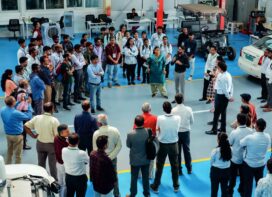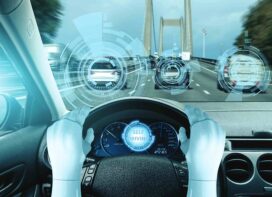

Akhilesh Srivastava is a globally renowned Digital Transformation Leader. He has successfully led many e-governance projects in India, like FASTag, the e-Tender portal, e-MB, the first online dispute resolution portal of India ODR, and the digital transformation of NHAI. He is leading the International Road Federation (IC) Road Safety Initiative and heads the World Economic Forum’s initiative Road Safety 2.0. He is also CEO of ITS India Forum and Chairman of Bitumen India Forum.
Intelligent Transportation Systems (ITS) emerge as a critical catalyst for reshaping the landscape of transportation. This article, authored by Akhilesh Srivastava, CEO of ITS India Forum, critically reviews the recently introduced NHAI ATMS Policy (2023), shedding light on its transformative potential and addressing key aspects of technological evolution, safety enhancement, and collaborative initiatives.
Integration of cutting-edge technologies within ITS presents a myriad of advantages that extend far beyond simple traffic management:
Reduced Traffic Congestion: Consider the bustling streets of Mumbai or Delhi, where traffic congestion is a daily challenge. ITS dynamically adjusts traffic signals and offers alternative routes, significantly enhancing traffic flow and reducing congestion. The success story of Singapore’s Electronic Road Pricing (ERP) system stands as a testament to the effectiveness of dynamic congestion pricing in managing traffic flow.
Improved Safety: ITS incorporates features like collision avoidance systems, real-time road hazard alerts, and electronic braking, contributing to safer roads. The implementation of Vehicle-to-Everything (V2X) communication in European countries has shown a significant reduction in accidents, demonstrating the potential of ITS to enhance road safety.
Energy Efficiency: Optimizing public transportation schedules, streamlining freight logistics, and providing real-time parking information contribute to increased efficiency. Curitiba, Brazil, is often lauded for its Bus Rapid Transit (BRT) system, a pioneering example of efficient public transportation facilitated by ITS.
Reduced Environmental Impact: ITS plays a crucial role in reducing emissions and fuel consumption by optimizing traffic flow and promoting efficient transport modes. The experience of Stockholm, Sweden, implementing a congestion charging system showcases how ITS can contribute to a greener environment by reducing traffic-related emissions.
The latest NHAI ATMS policy marks a commendable shift towards modernization, safety enhancement, and technology integration. The real-world examples and case studies presented demonstrate the potential impact of ITS and ATMS on traffic management, safety, and sustainability.
 TrafficInfraTech Magazine Linking People Places & Progress
TrafficInfraTech Magazine Linking People Places & Progress


